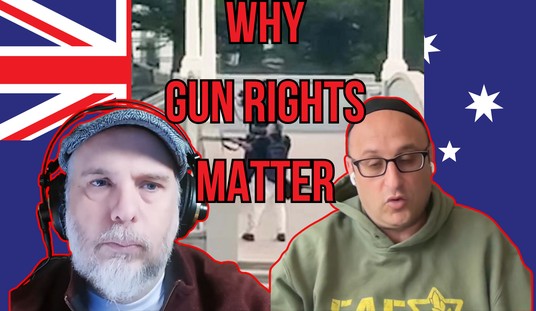The argument that Barack Obama’s ATF is attempting to use to ban common M855 ball ammunition for the AR-15 is that the bullet is “armor-piercing.”
Factually that is a lie, according to the clear definition of what constitutes an “armor-piercing” bullet as defined in the Law Enforcement Officer’s Protection Act of 1986 (LEOPA).
LEOPA’s definition requires the bullet’s core to be made of one of a number of specified hardened metals, and the core of the M855 ball round is soft lead that makes up 80-percent of the bullet’s total weight. The specific goal of the law was to prevent the use of hardened metal bullets with penetrator cores in common handguns, for what was then called “cop killer bullets.”
Amusingly enough, the mild steel insert in the front of the M855 round actually keeps the bullet from deforming or fragmenting at lower velocities, so that the M855 actually poses less of a risk of causing serious injuries than other 5.56 NATO rifle bullets. It is because the bullet does so little damage that it can be had so cheaply on the military surplus market for civilian target practice; both the Army and the Marines have ditched the M855 for bullets that do a much better job of stopping enemy combatants.
If the ban on the intermediate-caliber, mostly-lead M855 round isn’t defeated, the ATF would presumably have free reign to ban any ammunition, as the actual law seems to matter little to a rogue agency that ignores and redefines laws on a whim.
Penetrating either soft or hard armor isn’t a matter of bullet construction or metal choice as much as it is a function of velocity, a fact that Tim Harmsen of Military Arms Channel made abundantly clear in a new video at Full30.com. You’ll need to follow the link to view the video as Full30’s videos are not yet designed to be embedded, but trust me… it’s worth it.
Presently, most law enforcement agencies deploy Level II body armor to officers, because officers are more willing to wear this lighter, more flexible and comfortable armor than they are heavier, hotter, less flexible forms of armor. After all, agencies want their officers to actually wear the armor instead of leaving it in the trunk of their squad cars. Officers know that Level II armor will stop their most common threat, which consists of common pistol caliber threats, typically in ball ammo or hollowpoint form, at standard-to-magnum velocities.
But the reality of the matter is that pistol ammunition does exist that will penetrate the Level II armor preferred by law enforcement, and can even blow through the Level IIIA armor that is typically the heaviest armor worn by officers unless they are on a SWAT team carrying out high risk raids against specific, heavily-armed targets.
The video Harmsen made shows that even 9mm bullets made out of “non-armor-piercing” metals such as the lightweight Liberty Civil Defense copper hollowpoint can zip right through heavy Level IIIA body armor, as long as it has enough velocity. Harmsen then followed up the cutting-edge Liberty lead-free hollowpoint by firing a 62-year-old Bulgarian-made 7.62×25 Tokarev round at the same armor panel in a different spot. While obsolete by any standard, the bullet zipped right through the same armor panel, despite being of standard ball construction.
Bullet material doesn’t matter.
Bullet design doesn’t matter.
Even very good body armor quite clearly isn’t “bullet-proof.”
So where does that leave us?
It leaves us in a place where ATF has shown itself will to arbitrarily reclassify lead ammunition as “armor-piercing,” despite the fact that it does not qualify as such under the law. If allowed to stand, the agency can then challenge all centerfire rifle ammunition, and then as Harmsen shows, even decades old pistol bullets that are now deemed obsolete.
We can either be a nation of laws, or a nation of rogue agencies and dictatorial power.
Which will you allow?








Join the conversation as a VIP Member